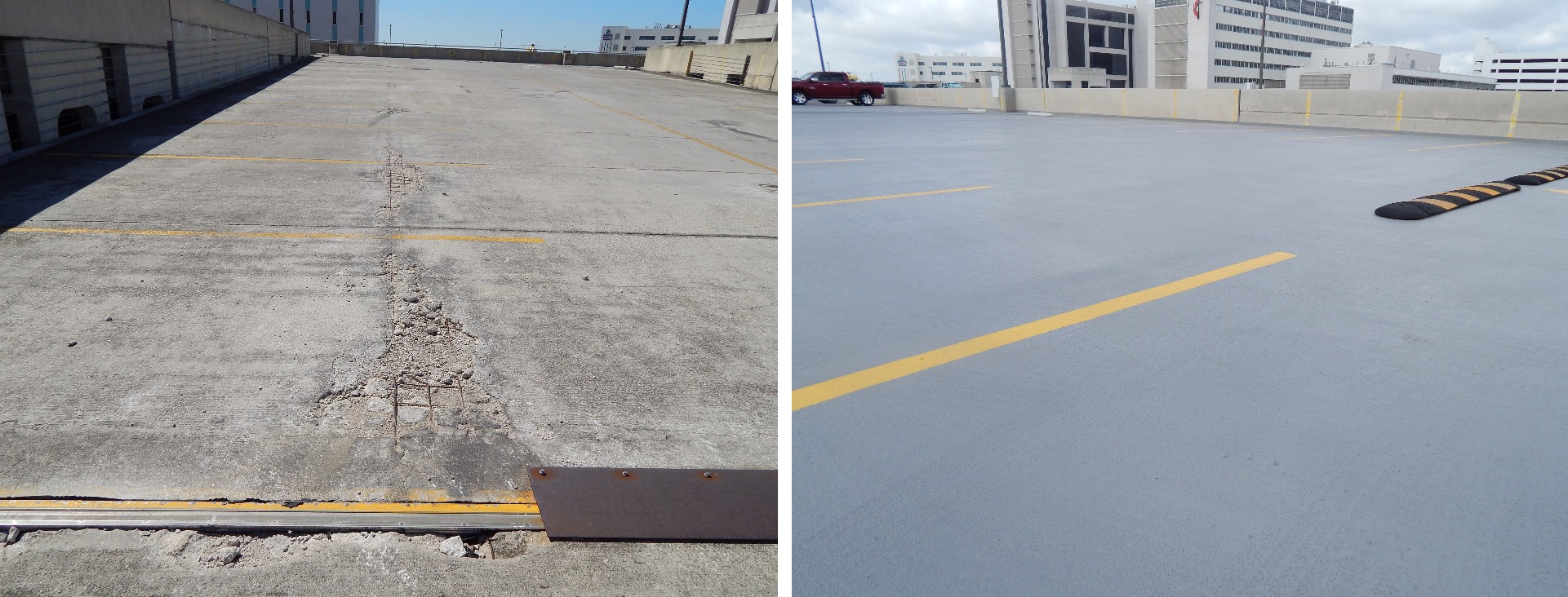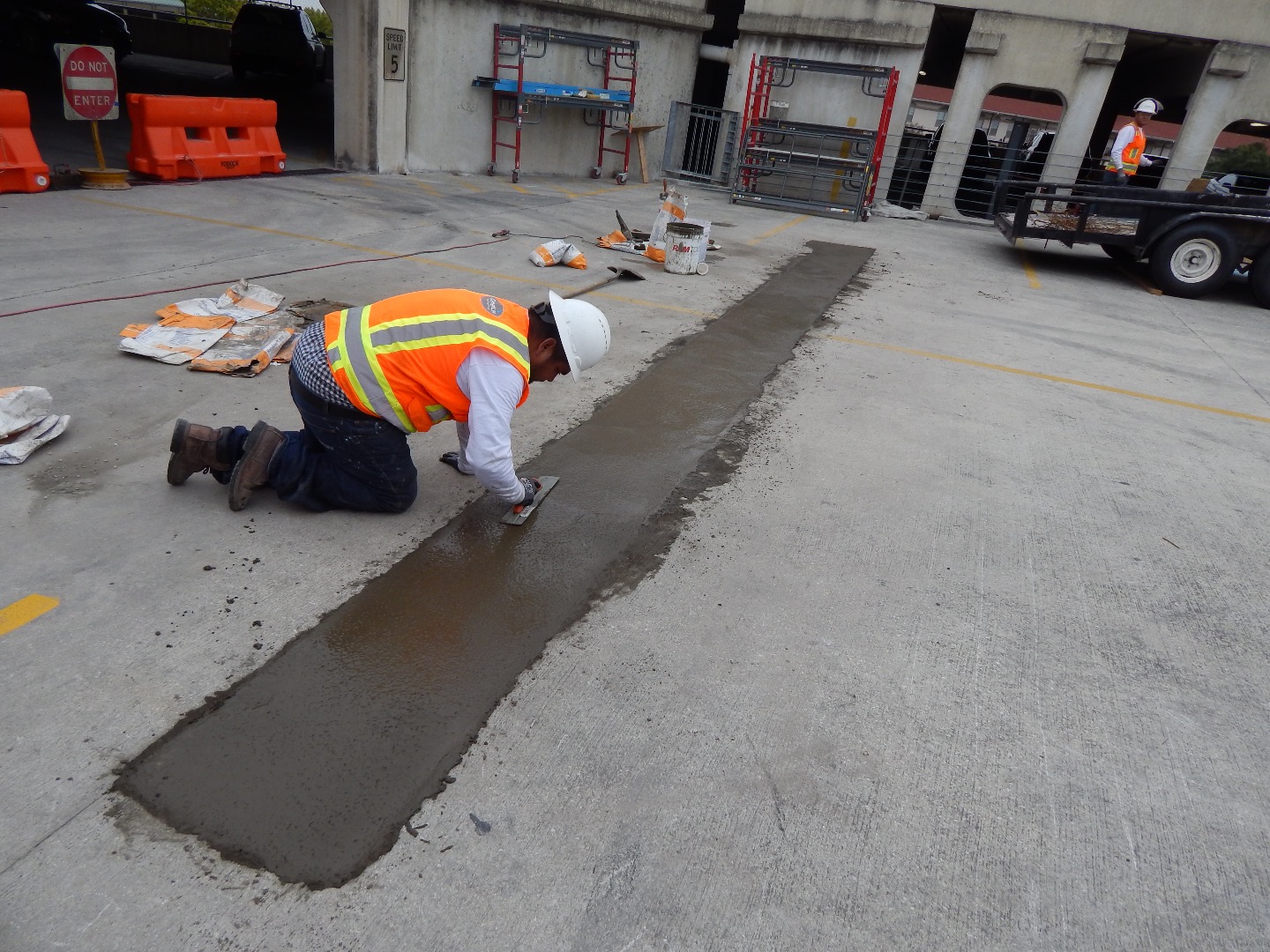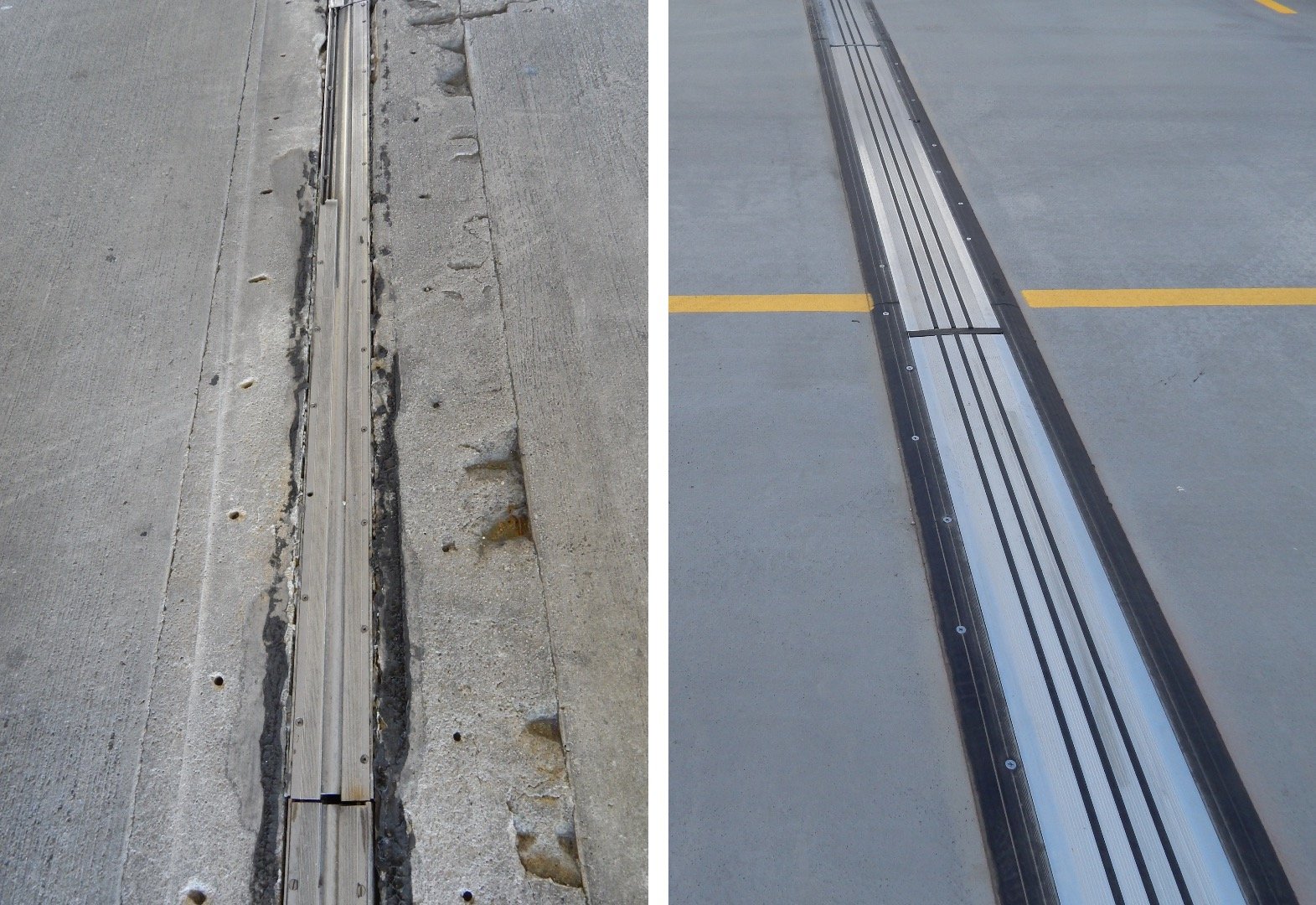Five Factors to Consider When Restoring Existing Parking Facilities
Restoration of existing parking structures is unavoidable and something that needs to be done regularly. With the advent of the concrete repair industry, a majority of maintenance and repair work is fairly straightforward. There are many readily available resources from professional organizations and technical committees outlining how parking structures can be kept in good condition to extend their service life. Typical maintenance and repairs usually include various types of concrete repair, sealing cracks, replacing sealants, applying concrete sealers and maintaining traffic toppings. Although the unit costs for these work items are fairly uniform among repair contractors, the total repair costs could vary depending on specific site conditions and how the repair-phasing plan is developed.
There are at least five factors that can significantly affect the cost of restoration:
- Available space for repairs
- Optimizing operation income
- Maintaining level of parking service
- Life cycle cost analyses
- Specific requirements for ingress and egress

Before and after parking garage concrete patching and traffic coating installation. Photo provided by Chamberlin Roofing & Waterproofing.
Available Space for Repair
When planning for repairs, an engineer must work closely with the property manager or parking operator of the building to determine the number of parking spaces that can be taken out of service at any time during repair construction. Typically, most restoration contractors would like to have access to the entire parking area, and it would be cheaper and simpler to do it that way. However, more likely than not, this is impossible. The continued demand for parking spaces must still be met and, to a certain extent, the stream of revenue from parking spaces needs to be maintained. It is helpful to know early during the planning stage how many parking spaces can be taken out of service at any given time during repair construction.
Based on our experience, a minimum of 100 parking spaces is required at any given time in order for the repair construction schedule to flow well. Of course, the more parking spaces available to the contractor during repair construction will result in less phasing and shorter repair duration, thereby resulting in lower total repair costs. In short, the number of available parking spaces during repair construction is inversely proportionate to the total costs of repairing the parking facility.
It should be noted that concrete floor repairs generally involve more than one parking level. In addition to the level that is being worked on, the level below the repair area also needs to be taken out of service to protect vehicles and pedestrians from falling debris. Consequently, although 100 parking spaces may be taken out of service, the contractor may be able to work in an area of only 50 parking spaces.
The contractor’s superintendent must work closely with the building manager or parking operator to transition from one phase to another so only the agreed upon number of spaces are taken out of service.

Leveling concrete to complete patching repair. Photo provided by Chamberlin Roofing & Waterproofing.
Optimizing Operation Income
In downtown and urban environments, many parking facilities are attached to a mixed-use high-rise building. In addition to monthly or yearly rental income for the spaces, there is a significant income stream from transient hourly parkers. With restoration construction, the transient parking will be reduced or even eliminated, resulting in a considerable loss of revenue to the owner. Understanding the impact of the loss of parking spaces and reduced revenue stream will allow for better optimization of the repair budget.
Maintaining Level of Parking Service
Repair construction tends to be dusty, noisy and messy. To lessen the impact, forward planning and communication are needed with the repair contractor, the parking facility operator, tenants and patrons. Steps to mitigate noise and dust can be written into the contract so the level of service is not compromised during repair construction.
Having multiple construction phases can result in confusion and frustration to the patrons if the re-routing signage is not clear and if the phasing schedule is not communicated early to all involved parties. We recommend that a detailed phasing plan be incorporated as part of the bidding documents, showing the number of construction phases, each with the number of parking spaces to be taken out of service, at what dates and for how long a duration. This allows for all stakeholders to be aware of what can be expected in each repair phase. It is important that the phasing plan be discussed at the pre-bid meeting, so the bidding contractors understand the phasing plan for the project and this provides a level playing field for contractors bidding the project.
It is apparent that the shorter the repair duration, the less impact there will be on the operation and income stream of the facility. However, there are opposing factors that need to be considered. A shorter duration will require that more parking spaces be taken out of service for each phase. On the other hand, the more phases you have, the lower the number of parking patrons that will be displaced for each phase but at a higher total repair cost. The higher construction cost is due to the additional overhead in mobilization costs for each phase, providing routing, signage, barricades, etc.
In summary, a more complete phasing plan is needed for cost-effective pricing from contractors. In addition to planning for the repair items, consideration should be given to parking stakeholders. Items should include layout of repair phasing, traffic circulation patterns, direction and signage, and steps to maintain the expected level of service including dust, noise and cleanliness control.

Severely deteriorated concrete and rusted rebar in parking garage. Photo provided by Chamberlin Roofing & Waterproofing.
Life Cycle Cost Analyses
Another item to consider when planning parking facility repair is the life cycle repair costs for key components of the parking facilities, such as the traffic bearing topping or waterproofing membrane. Traffic topping has a typical life expectancy of 10 to 12 years. If the parking facility is expected to be taken out of service within the next three to five years, there is no reason why the new traffic topping should have an expected service life significantly exceeding five years.
On the other hand, a lower cost product with an expected shorter life cycle may not be the most cost-effective one to use. For example, if repair operations represent a major nuisance for the tenants, then having a better quality but more costly traffic bearing membrane that can last twice as long may be less expensive and more effective in the long run. In this case, the interval for membrane replacement would be longer and the average in-place costs less per year.
In summary, having lower up-front costs may not be the most cost-effective solution for your parking facility. An experienced and reputable parking restoration engineer will provide you with the optimum recommendations.

Before and after expansion joint replacement and traffic coating installation. Photo provided by Chamberlin Roofing & Waterproofing.
Specific Requirements for Ingress and Egress
Ramps in and out of the parking facility can represent a unique challenge to keeping the parking facility in operation during repair construction. Usually, the entranceways are limited and cannot be taken out of service without limiting ingress and egress. As a result, a fast track repair operation is necessary. To have a smooth operation, special materials should be highlighted in the repair specifications, eliminating the potential for unnecessary change orders by the contractor.
When shutting down the ingress or egress is not feasible, it may be necessary for owners to provide full-time traffic guards to direct traffic in and out of the facility on a single ramp. As expected, there could be significant additional costs involved, which need to be budgeted for accordingly by the owner in the planning stage. As an alternative, the owner could pay a premium to shut down the parking facility and have the contractor work 24 hours a day, seven days a week until construction on the entrances is complete. Projects adjacent to residential areas most likely will have noise abatement ordinances that will affect the time periods that work can be performed.
Because repair and maintenance of existing parking structures is unavoidable, taking proper steps to address the repair process will not only make the operation smoother, but more cost-effective with fewer complaints.
This article was originally published in SWR Intstitute's Applicator publication.

Left: Nam Shiu, PE, SE
Senior VP/Senior Director of Restoration
Walker Consultants
Right: Laurence C. Susmarski
Restoration Consultant/Project Manager
Walker Consultants
Subscribe Today!
Stay-in-the-know and subscribe to our blog today!